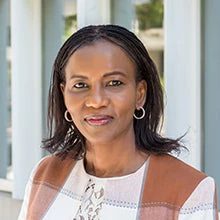 Photo: River embarkments for flood protection under the Somali Resilience Programme (SomReP). World Bank/ Dookh Press
Photo: River embarkments for flood protection under the Somali Resilience Programme (SomReP). World Bank/ Dookh Press
Development economist Paul Collier famously characterized conflict as “development in reverse”. A new World Bank report, “The Great Reversal: Prospects, Risks, and Policies in International Development Association Countries”, arrives at a similar conclusion. The authors highlight that the incomes of more than half of the poorest countries worldwide – namely the 75 countries eligible for grants or low-interest loans from the World Bank Group’s International Development Association (IDA) – grew slower than those of advanced economies, the highest share since the beginning of this century. Analysis in the report shows it is fragility, conflict and violence that contribute to making many IDA countries fall behind. That’s why we need to increase our attention and resources to countries affected by conflict and fragility in order to “reverse the reversal”.
The sluggish growth rates of IDA countries are largely influenced by the growth trends among fragile and conflict-affected situations (FCS), which comprised 33 out of the 75 IDA-eligible countries in 2023. Over the last 15 years, GDP growth rates in FCS countries have been consistently lower than the growth rates of low-income countries (LICs) and of the emerging markets and developing economies (EMDEs) (figure A). Economic recovery from the COVID-19 pandemic was particularly disappointing in FCS countries, with GDP growth rates lagging 6.2% on a per-capita basis behind those of EMDEs in 2021. Over the period of 2010 to 2023, output in FCS countries grew on average almost 2.8% less per year on a per-capita basis than in EMDEs. They also lagged behind LICs and IDA countries over the same period, with 1.1% and 2.5% lower growth rates per-capita respectively. More than half of all FCS countries have a lower GDP per capita in 2024 than they had in 2019. FCS countries are falling behind, caught in a development trajectory that is different than in the rest of the world and characterized by persistent poverty and declining human capital.
The sluggish growth in IDA countries coincides with another major development in the past decades: both the number of active conflicts as well as the number of countries home to at least one conflict rose to the highest number in more than 20 years. The most significant surge in conflict occurred in LICs. The number of active conflicts in LICs increased significantly over the past 15 years, from around 22 in 2010 to more than 70 in 2021. Since 2020, LICs host almost 60% of all active conflicts.
This is bad news for the goal of reducing global poverty from its current rate of about 9% to 3% of the world’s population by 2030. While extreme poverty is expected to decline globally, the number of extreme poor will increase and become more concentrated in FCS countries. Today, almost half of the global extreme poor live in FCS countries. By 2030, it will be nearly 60%.
These developments necessitate increased attention and efforts to support FCS countries in the fight against poverty. To end poverty, the most fragile countries cannot be left behind. In line with the findings of the World Bank’s mid-term review of its FCV strategy, two implications stand out.
First, the Bank needs to remain engaged even in the most challenging of situations, including during conflict. It is during conflict that the Bank and its partners are needed the most to preserve hard-won development gains and ensure the continuation of investments in human capital and institutional capacities. A recent review of projects in FCS countries shows that many such projects achieve their objectives, with performance metrics on par with non-FCS countries.
Second, the Bank needs to enhance its support for the prevention of conflict and the transition out of it. To that end, the Bank will increase its attention and resources to early responses to emerging FCV challenges and to the adaptation to shocks. Research shows that investing in prevention works. By preventing many countries from descending into violence, investments in prevention yield substantial savings.
With increasing efforts that recognize fragility as a global development challenge, we can help ensure that “the great reversal” will be reversed.


Join the Conversation